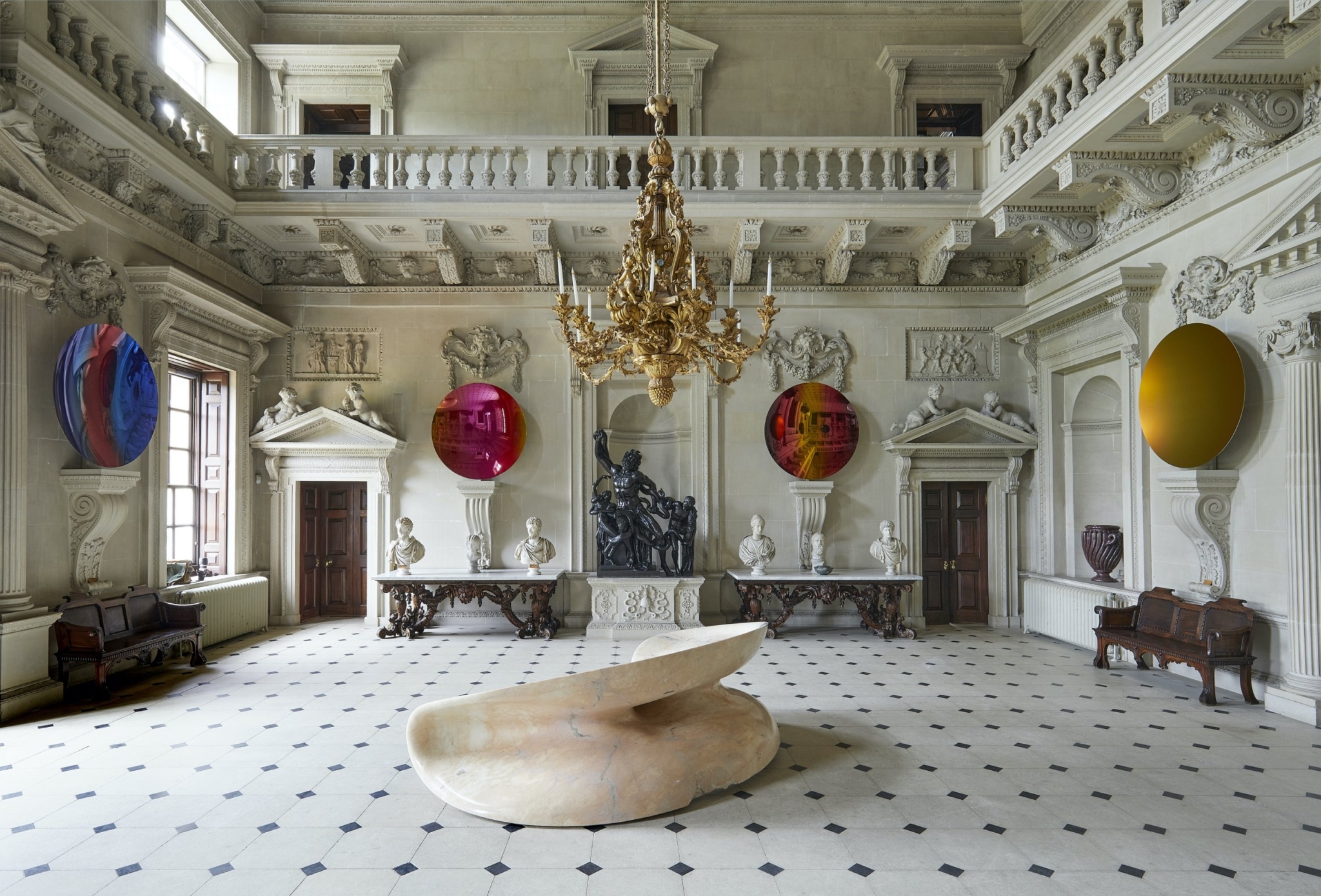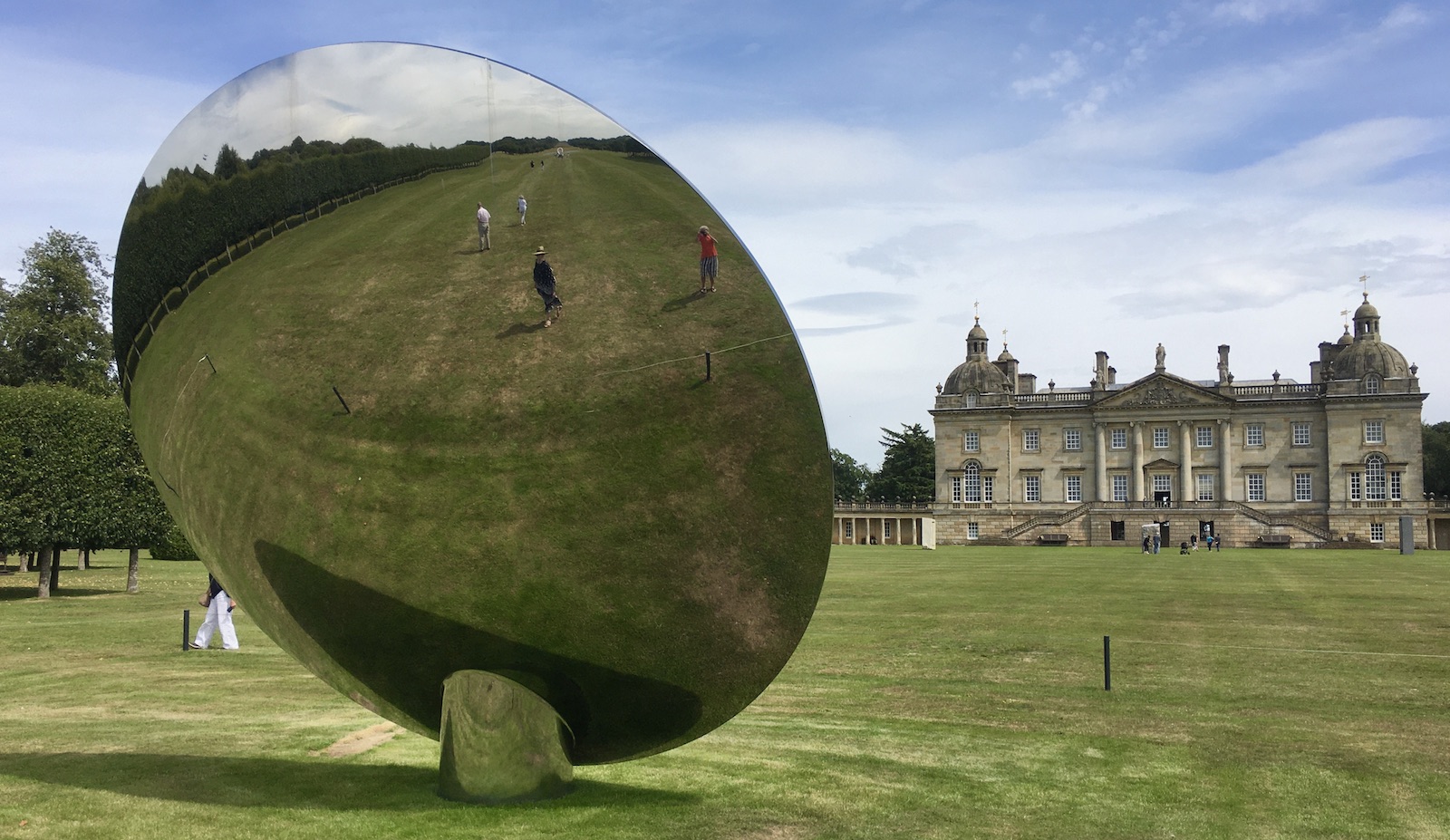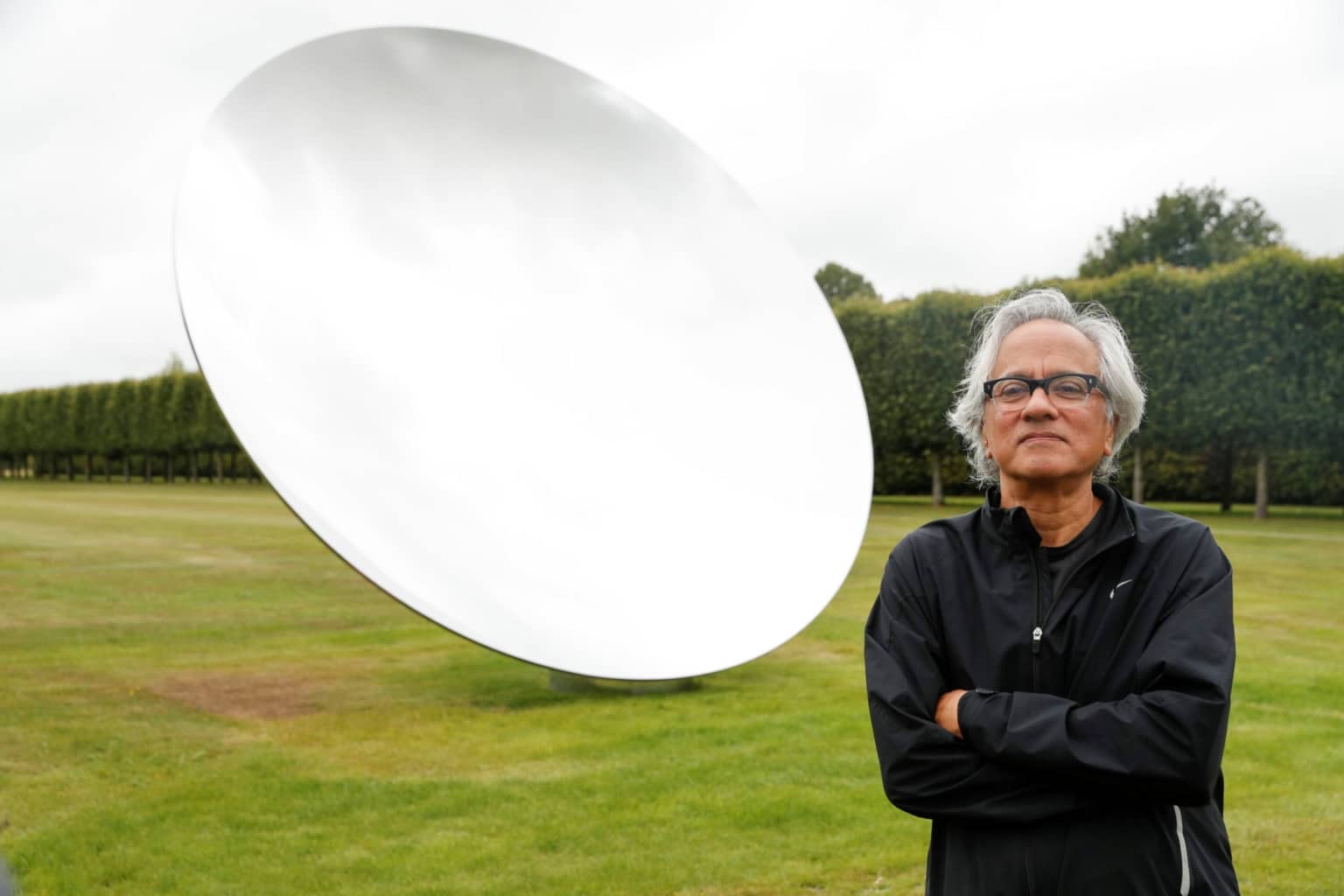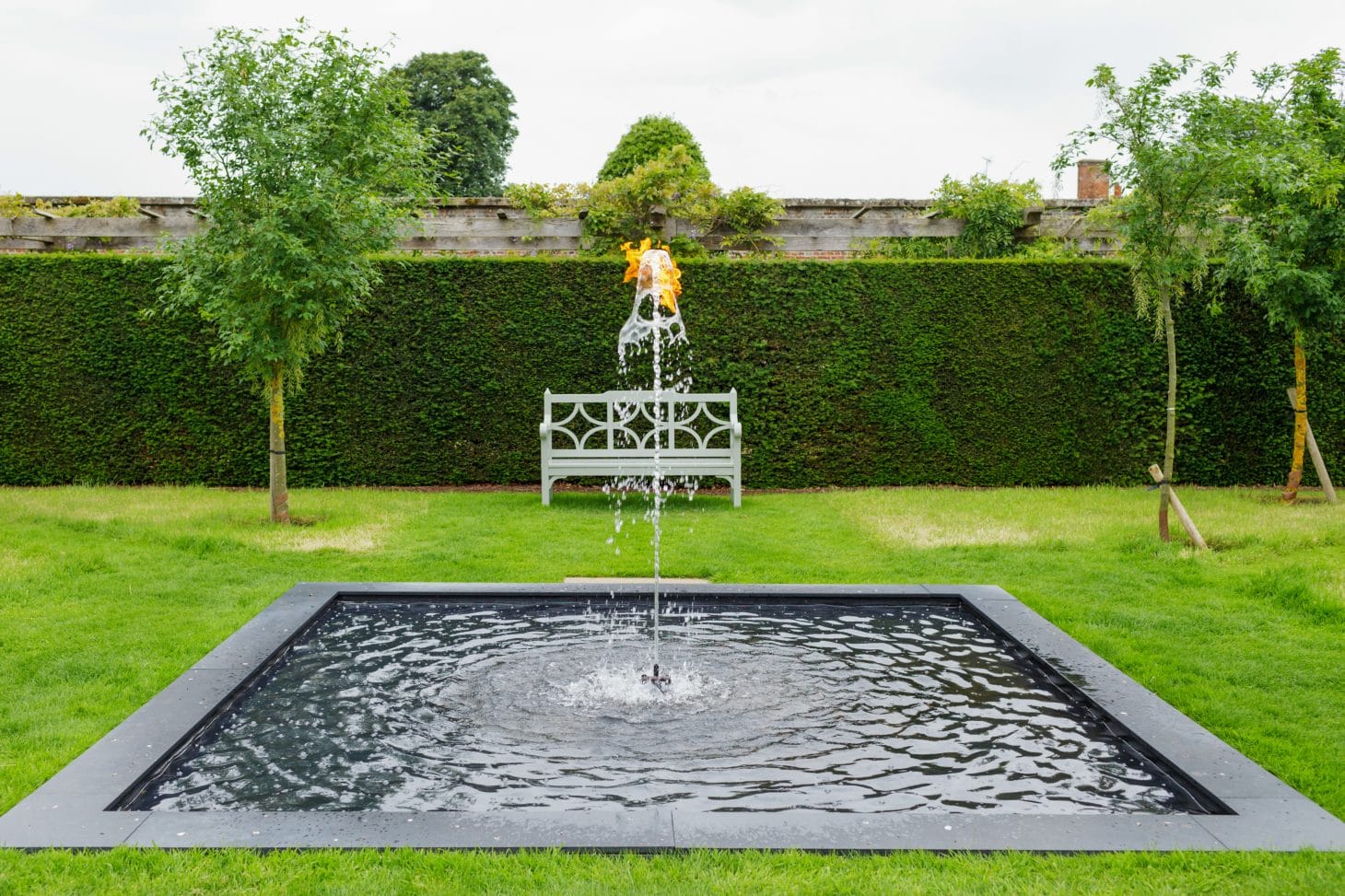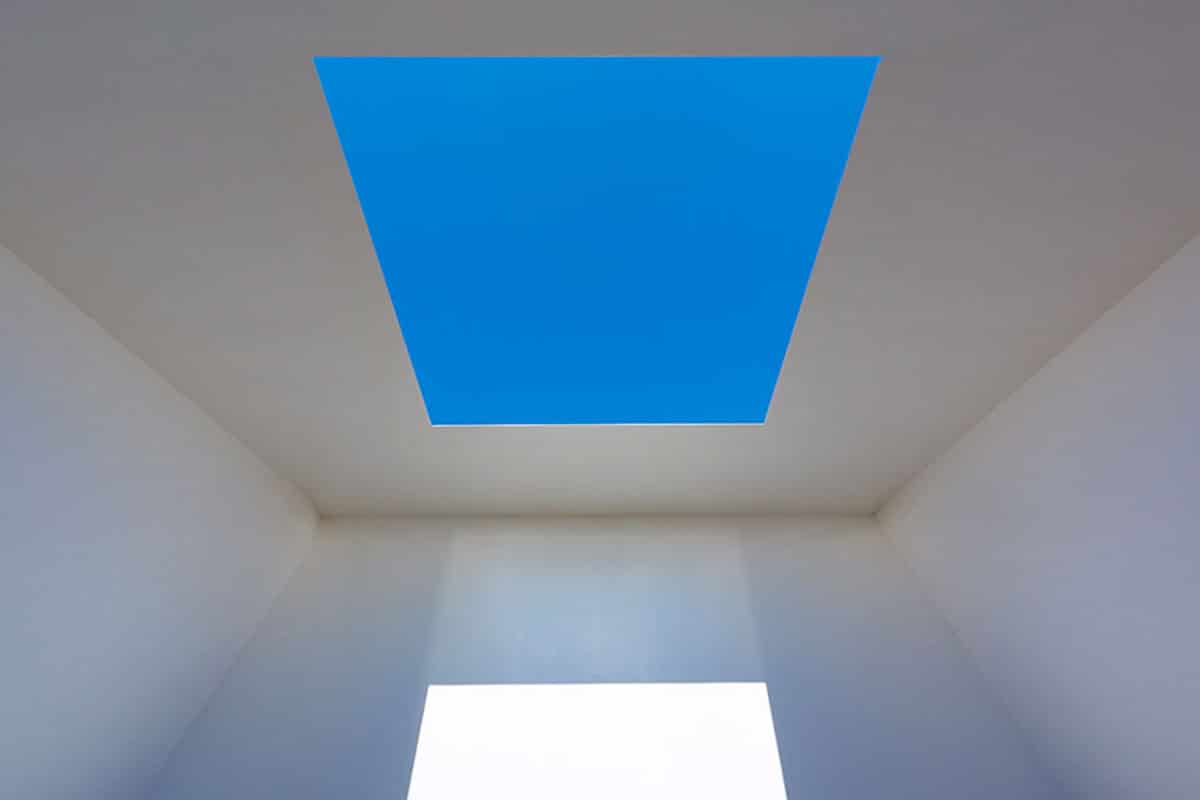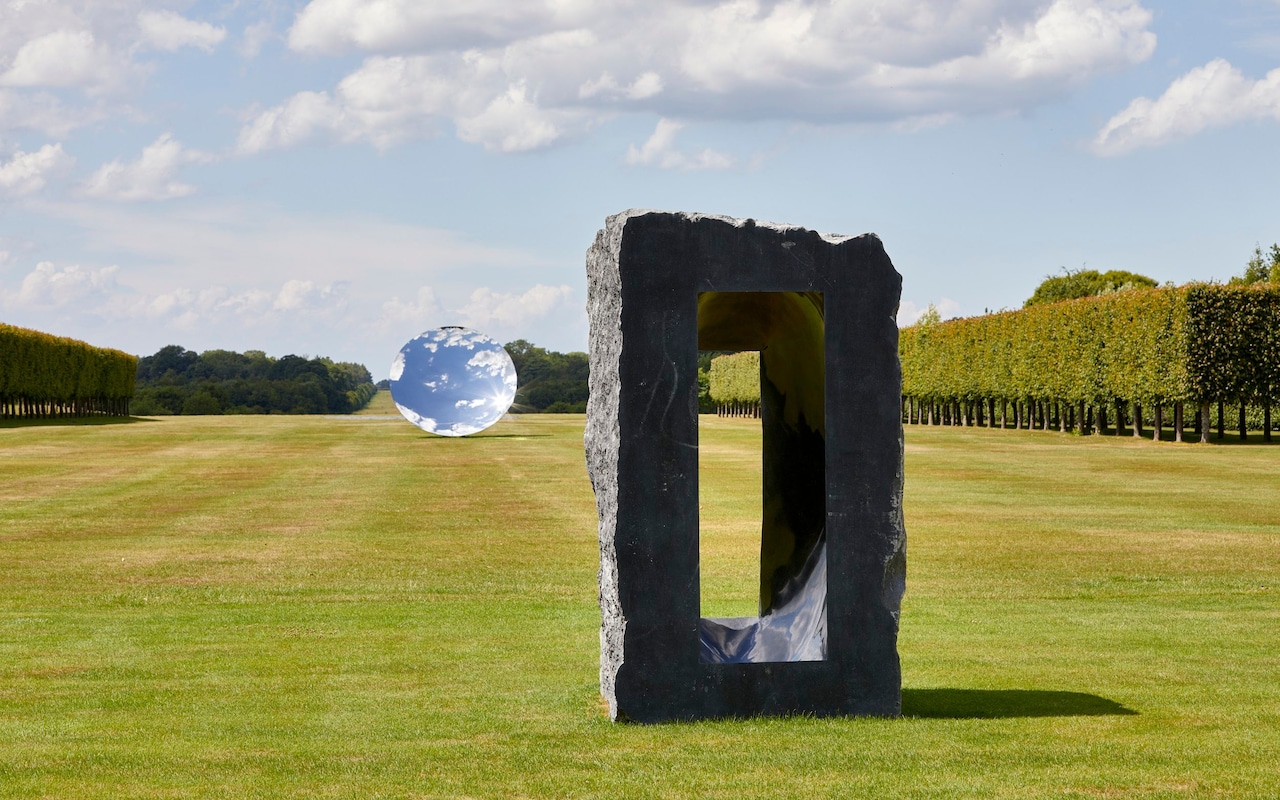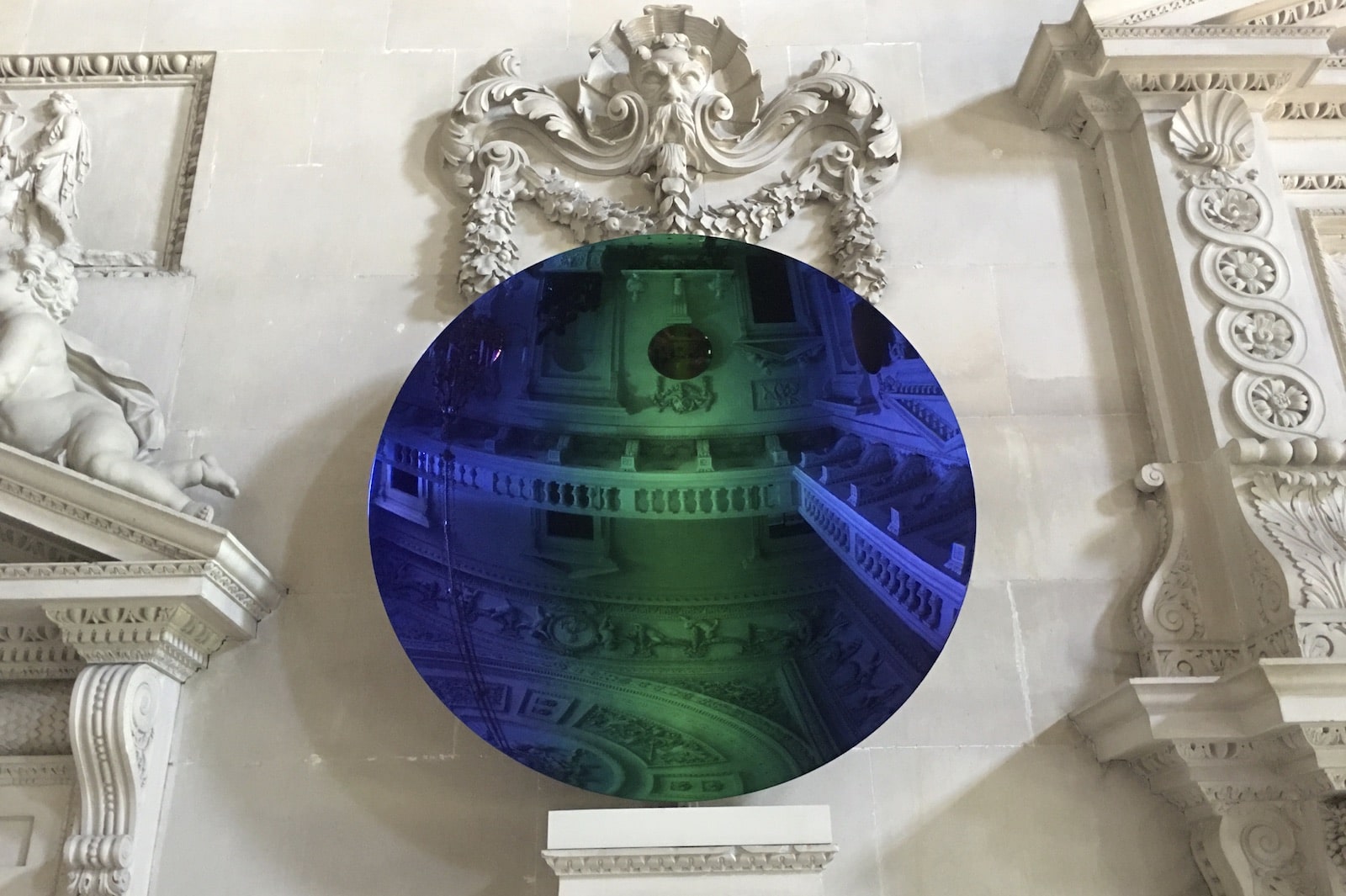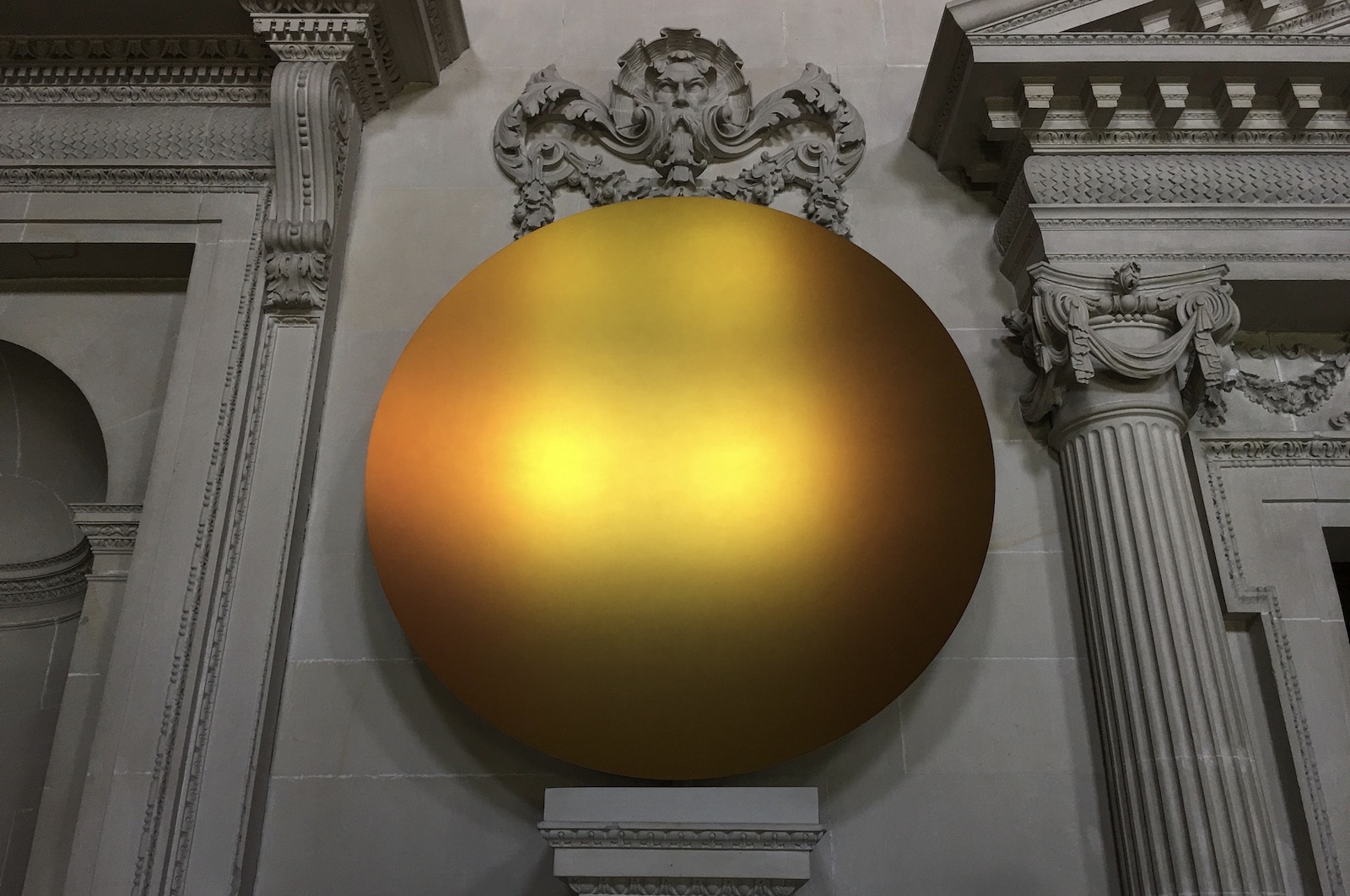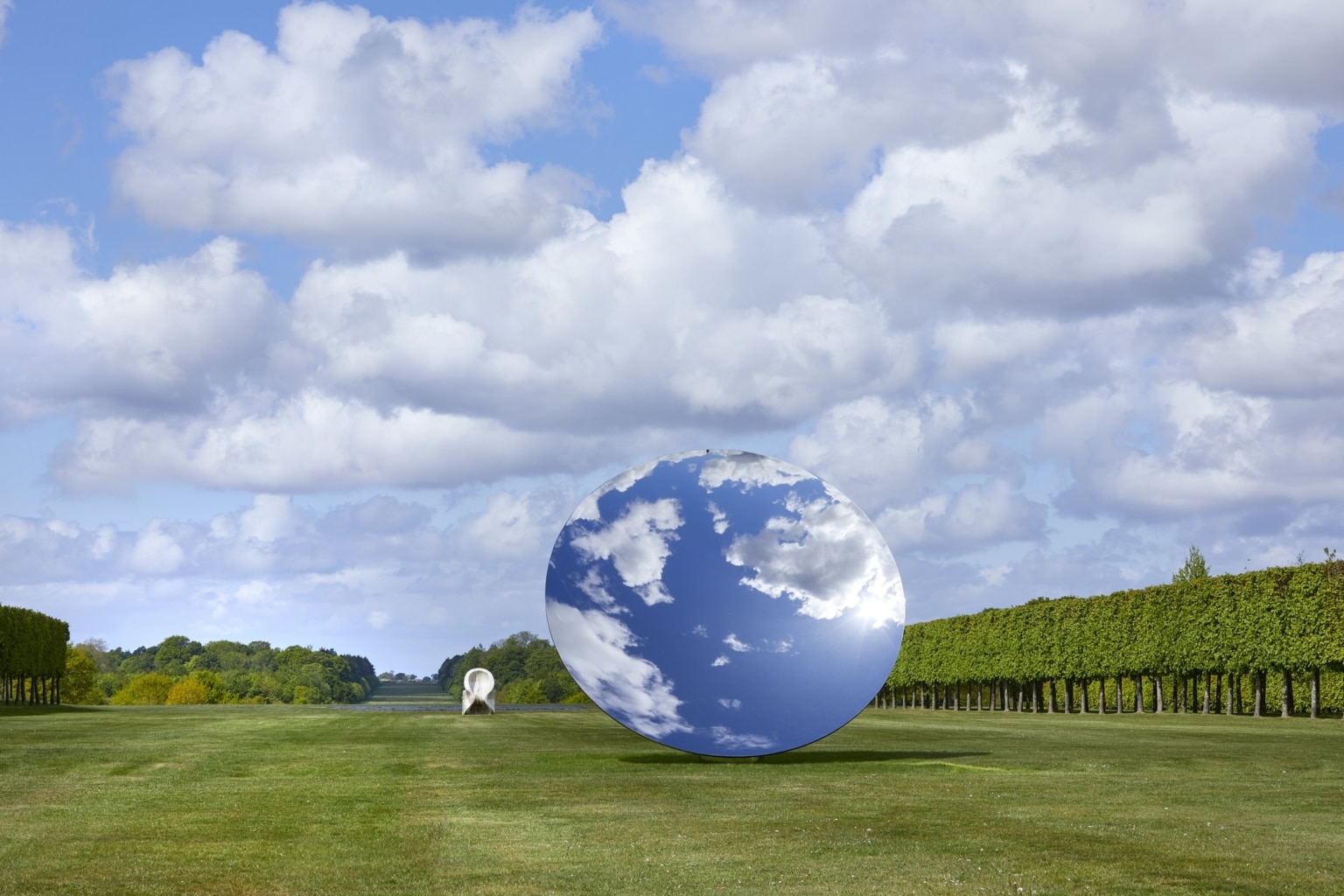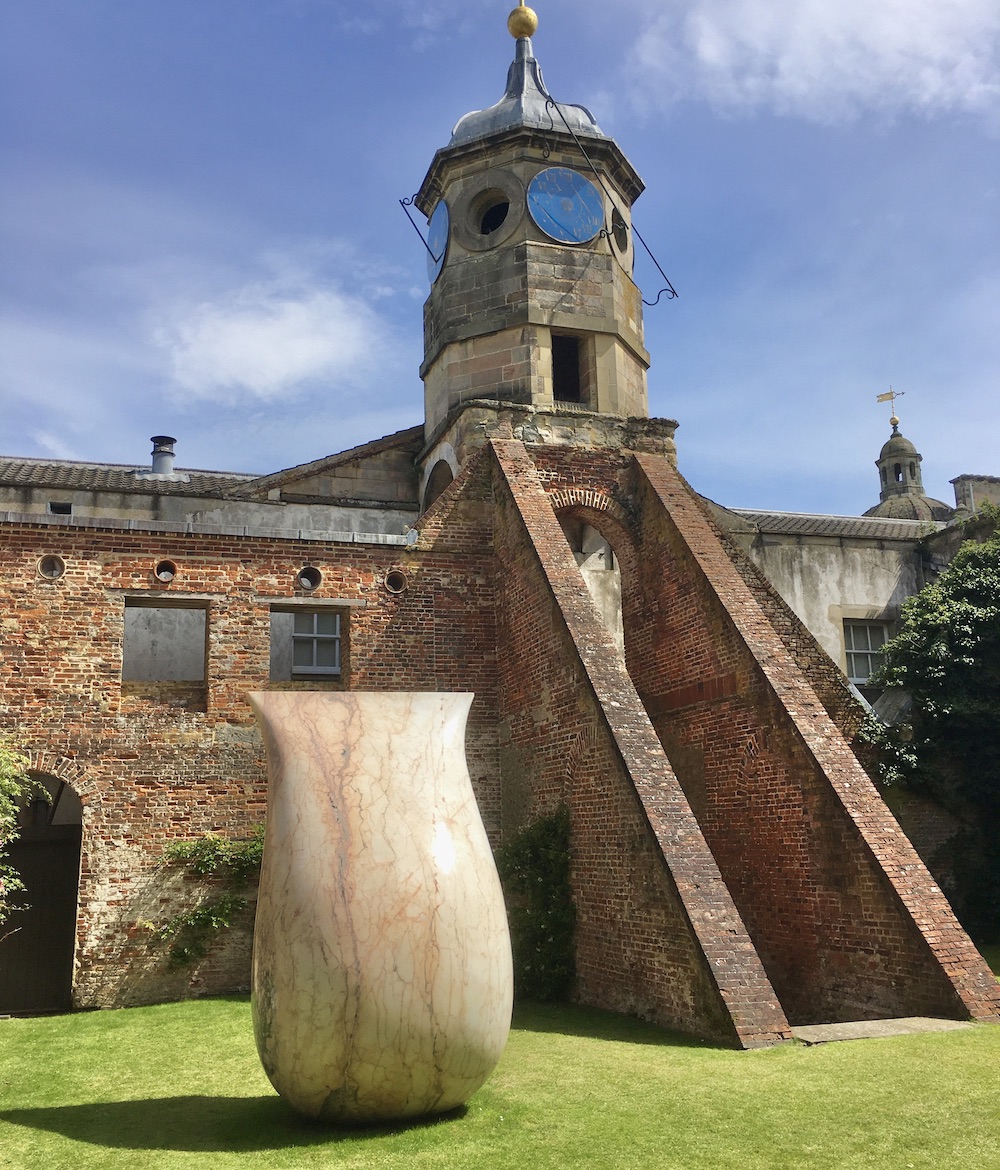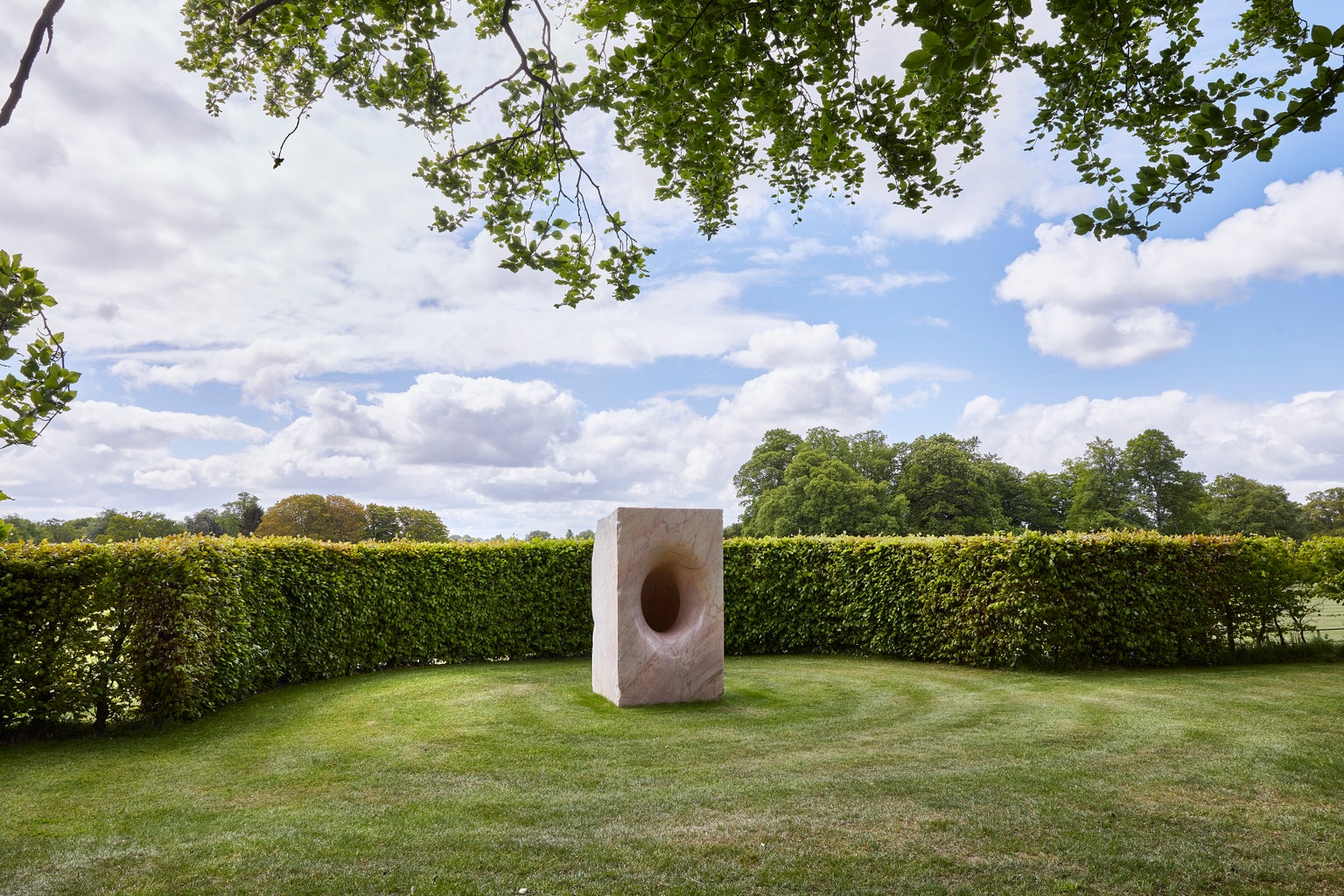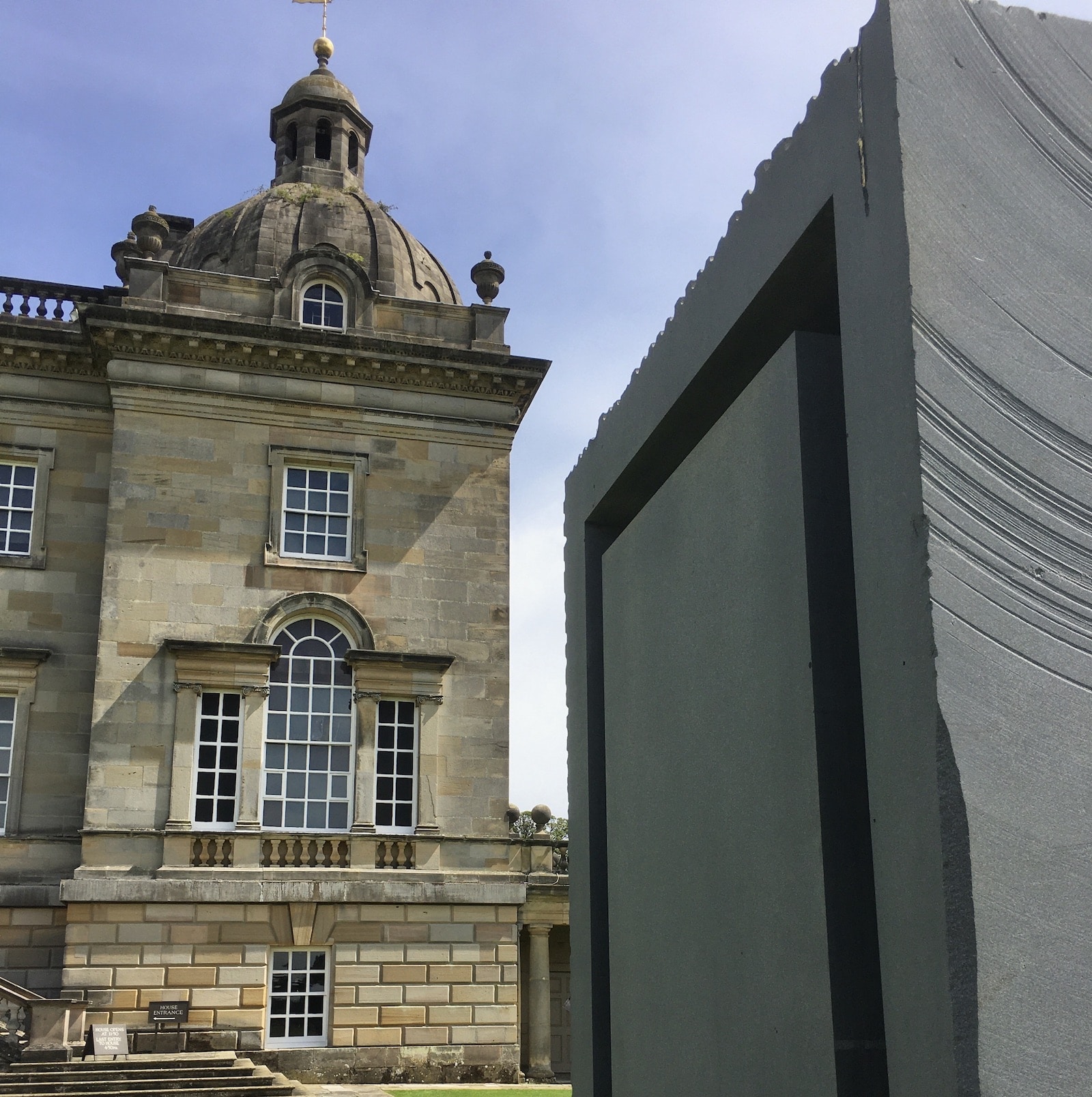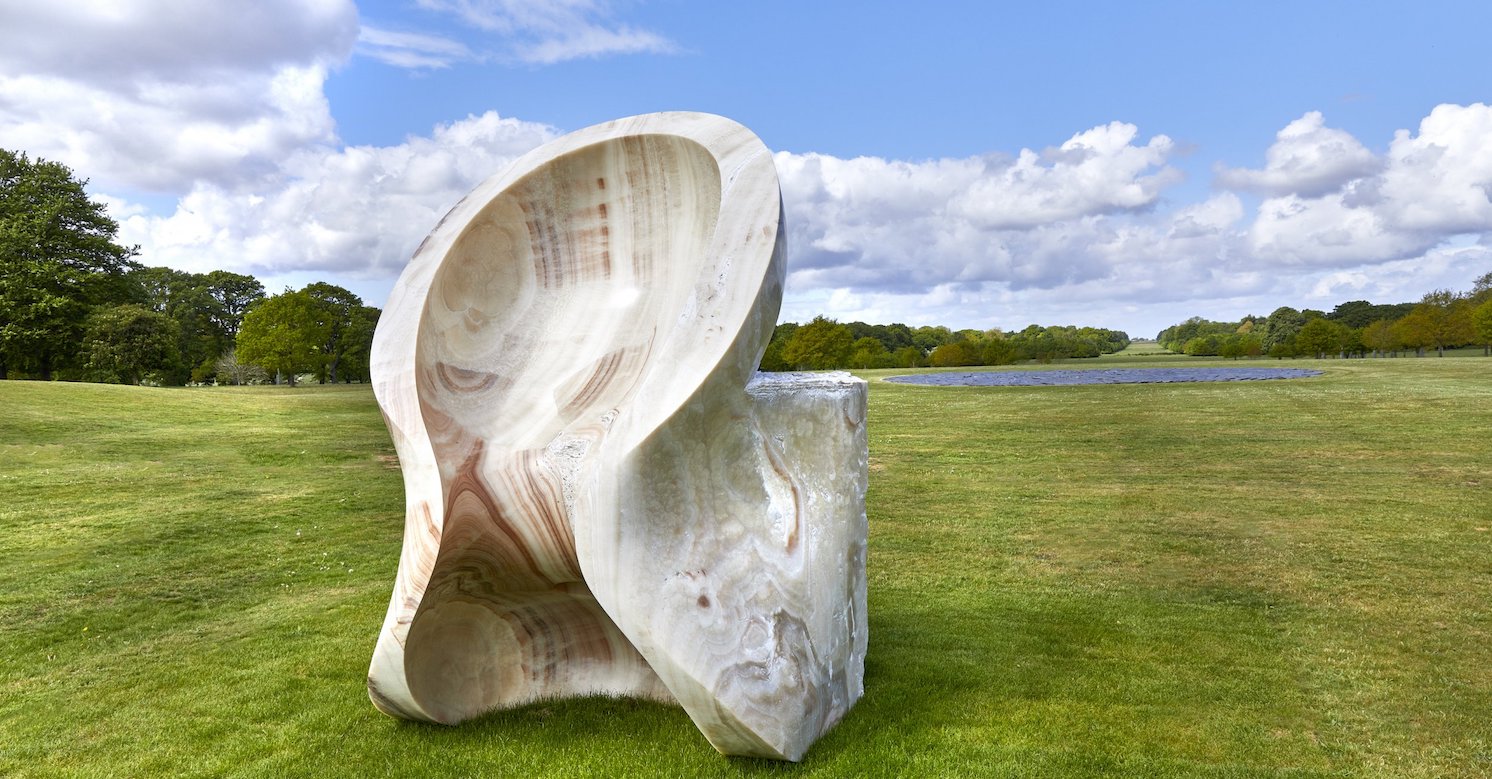Anish Kapoor at Houghton Hall was one of the most anticipated exhibitions of the spring. It was however cruelly snatched away from us at the last second as Covid-19 shut down all of the events at the start of the year.
The delayed opening has now just taken place and we are now allowed to visit, albeit in reduced numbers, with pre-booking essential, right through until November.
Kapoor follows in the footsteps of other distinguished artists, that have in recent years, been invited to exhibit by the Houghton Hall Arts Foundation: James Turrell 2015 (read our review here), Richard Long 2017, Damien Hirst 2018 and Henry Moore 2019.
The wait has certainly been worthwhile. Firstly, the setting of course is exquisite. The house, one of the grandest survivors of Palladian architecture, was designed in the 1720’s for Prime Minister Sir Robert Walpole.
There is a beautiful 5 acre walled garden which includes a sculpture by Richard Long and a burning fountain by Jeppe Hein.
A spectacular James Turrell Sky Space is another must-see, whilst wandering freely in the vast grounds are a spectacular herd of white fallow deer.
The exhibition comprises a selection of Kapoor’s works from the last 30 years and traverse materials as varied as pigment, granite, mirrors, sandstone, steel and onyx. These sculptures are spread through the grounds and a limited number of the Hall’s rooms.
Kapoor, as Lord Cholmondeley, the owner of Hall, states ‘… is a magician. His elegant reflective pieces throw back the world in mysterious ways.’ His works question their surroundings disappearing, emerging and reflecting and playing with dualities like earth-sky and visible-invisible.
Entering up a grand staircase to the Stone Hall we find eight large, convex mirrors. These replace stone Roman busts, which would have absorbed our gaze, with a spectacular multicoloured reflecting and distorting our vision. By changing the meaning of the space and introducing vivid colour into this formal historic gallery of white stone, both the room and the works are transformed.
From the terrace outside we get a magnificent vista of the grounds, at the heart of which is another mirror – Sky Mirror (2018). One could say that it is simply a distorted reflection, however it transforms the sky in to something other and almost alien, despite its familiarity. It is more intense in colour and movement; our own movements activate the image and an optical illusion at times turns the concave object in to a magical floating sphere.
Scattered elsewhere in the grounds are works in stone. In a courtyard Grace (2004) and Imminence (2000) are smooth and bulging. Sophia (2003) and Liver (2001) located in the woods are similarly smooth with curved recesses. All are in a veined pink marble or onyx and resemble bodily forms.
Other works in stone show their origins in a rough hewn lump of rock. The black marble Eight Eight (2004) gives us an inverted reflection of the world in one highly polished surface which contrasts with another, dull and rough.
On the lawn, giant rectangular blocks of grey limestone and pink granite are similarly left with uncarved surfaces as well as deep straight cuts and recesses. They act as a clear parallel to the tamed nature of Houghton Hall’s gardens with their mown lawns, trimmed hedges and rows of formally planted trees.
Some of Kapoor’s earliest works are shown in the south wing gallery. Wounds and Absent Objects (1996) play with our perception. Either protruding from, or into, the walls their dark matte pigment surfaces provide few visual clues to their true form.
Many of Kapoor’s most famous works are seen as public sculptures and this exhibition is a reminder of how his work is best seen. Works like these are often rendered sterile in the white cube of galleries and the formality of museums.
At Houghton Hall the meeting of the historic hall, formal gardens and contemporary sculpture brings new insight in to each and adds to both.
Anish Kapoor at Houghton Hall is open until 1 November 2020
For more information visit Houghton Hall




